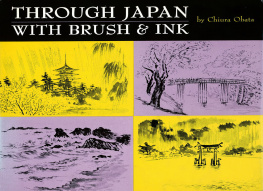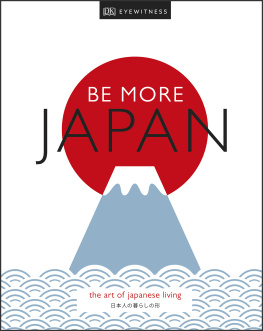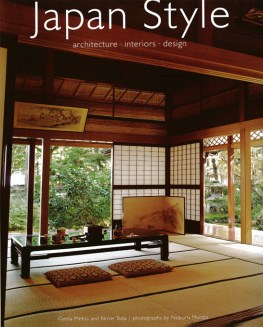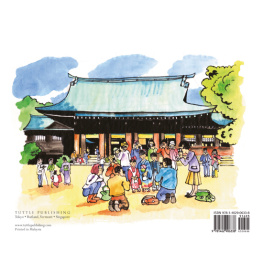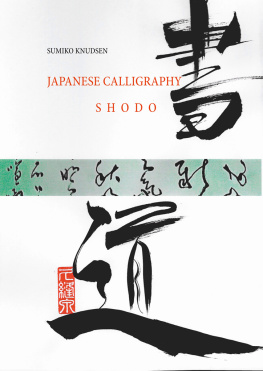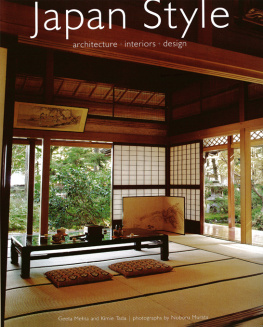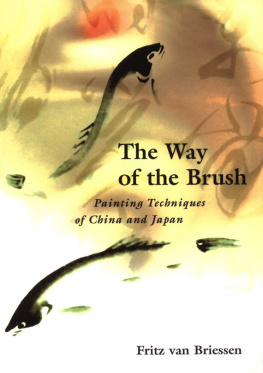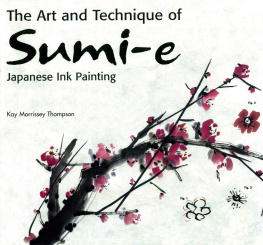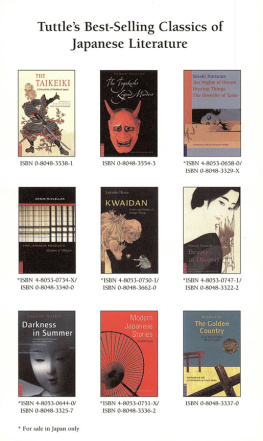1. The Human Wave of Tokyo
Imagine this city of over ten million people, this capital city whose population accounts for more than a tenth of the Japanese nation. Everywhere one looks there is bustle and stir; every place a person walks he feels himself colliding with a tidal wave of humanity, whether in the Ginza, Asakusa, Ueno, Tokyo Station, Hibiya, or any other district of this megapolis. Then, too, one is aware of endless buildings rising toward the heavens. At such moments one feels as though he were hopelessly trapped by these waves of humanity between the endless man-made canyon walls; so much so that once he finds himself again in the open countryside where the old eternal modes of farming persist, it is as though he had been suddenly transported to another world remote from modern man.

2. Visitors at the Imperial Palace Plaza
On longer acquaintance, however, after the visitor has became more used to the throngs of people everywhere on the streets of Tokyo, he becomes aware of individuals and types. For example, here at the Imperial Palace Plaza, he sees many groups of tourists, young and old, men and women, from all provinces and nations, arriving and departing every hour of the day. Then, too, there are those platoons of school childrenboys and girls in their navy blue uniformsparading around the plaza continuously. The tiniest of them have quaint yet practical tags sewed on their uniforms identifying them, in the event of a mishap, by name and school. Each flock seems shepherded by a teacher carrying a small pennant, apparently designed to keep his little troop in line and to avoid losing any of his wards.

3. Asakusa Kannon Temple
Though all of Tokyo's ten million live in crowded quarters, the most teeming quarter of all is that surrounding the Asakusa Kannon Temple. In all the streets radiating from the temple's main entrance, one finds people closely packed together like sardines. In front of the temple there is a large wooden offering box into which the pilgrims drop their coins. Above this box a huge lantern hangs. A strange custom dating back to the Edo period still persists here, for on this lantern one sees inscribed the names of the leading geisha girls and geisha house owners.

4. Kabuki Theater
Kabuki has come to epitomize the artistry as well as the magnificence of Japanese culture. It is no wonder then that the Kabuki Theater has been accepted as a rendezvous in the capital city for cultured people from all over Japan, as well as for distinguished visitors from abroad. During the performances given in this palatial theater, the audience senses all those spiritual qualities, those noble feelings that characterize the Japanese people at their besta subtle blending of taste, tradition, and technique that enables this nation to give vent to its feelings without losing dignity and without sacrificing beauty.
5. The Tokyo International House of Japan
A very important gathering place for foreign scholars and students, the Tokyo International House of Japan is located at Toriizaka, Azabu in Tokyo. In addition to housing lecture halls and halls for social affairs, it has facilities for boarding and lodging numbers of visitors from distant lands. Formerly the private estate of Baron Iwasaki, the grounds surrounding International House offer its visitors the comfort and delight of a beautifully laid out and carefully maintained Japanese garden in the great tradition.

6. Night Scene on Ginza
All hues of neon lights flash in the night sky. Like dancers in the street, Ginza's endless streams of human souls move on and on. The walk is called gimbura, meaning without any set purpose or destination.


7. Kamakura Beach
Along the undulating shoreline's length all the way from Odawara to Chigasaki, Oiso, and Enoshima, the traveler is charmed by the sight of small boats wavering like sea birds along the sand dunes.
73. Sacred Dancing, Shiogama Shrine
Shiogama Shrine was erected over a thousand years ago as the spiritual guardian and sanctuary of northeastern Japan. Built on a hillside overlooking the large fishing port of Shiogama, the shrine looks southward over the city in the distance with a panoramic view of Matsushima Bay beyond. The shrine is frequented by local fishermen praying for a better catch and for protection from the hazards of the sea, as well as by expectant mothers hoping for a safe delivery. In the accompanying sketch we sec vestal virgins performing the kagura, or sacred ritual dance, that aids petitioners in the birth throes.

74. A Glimpse of the Sea Through Pine Bo ug hs
Connected with the center of Matsushima Park by a long wooden bridge, Fuku-urashima lies within easy walking distance. On this island a bridge teahouse has been provided to offer visitors charming vistas of the nearby trees of many species as well as glimpses of the sea. In this sketch we catch a characteristic glimpse of small fishing boats busy with their catch in the distance as we look through the gnarled limbs and clustered needles of an old pine tree.

75. Two Famous Plum Trees of Zuiganji, Matsushima
Here we have two views of the famous Red and White Sleeping-Dragon Plums of Zuiganji (Zuigan Temple) on Matsushima. Looking through the temple's central gate toward the close, or inner garden, one sees these two ancient plums. Both are in full bloom. In the first sketch we see the white plum with its famous cast-iron lantern; in the second, the red. They suffuse the whole enclosure with their fragrance.
There is indeed a romantic history! About three hundred years ago, we learn from chronicles of the period, the local feudal lord, Date Masamune, joined Hotaiko's expeditionary force in Korea. Yet even in the coils of war Masamune was so captivated by the beauty of these two Korean plums that he brought them all the way back with him and planted them in this Zen temple garden.

76. A Novitiate's Grotto
Over a thousand years ago the well-known priest, Jikaku, after having traveled all over Japan in search of a suitable site, chose this location as the ideal place for training novitiate priests in Zen. Here he and his followers first excavated a cave in which to meditate. Since then generations of disciples and priests have excavated many others. In this sketch we see a characteristic cluster of sculptured Buddhas and engraved Buddhist inscriptions hewn from the native stone between the mouths of several such caves.

